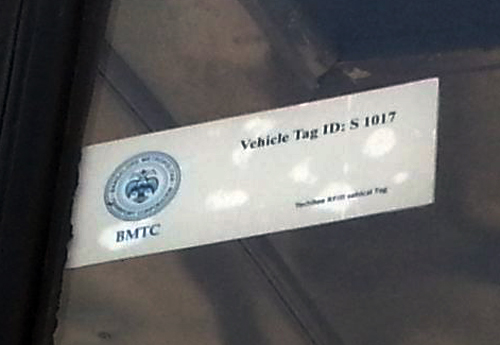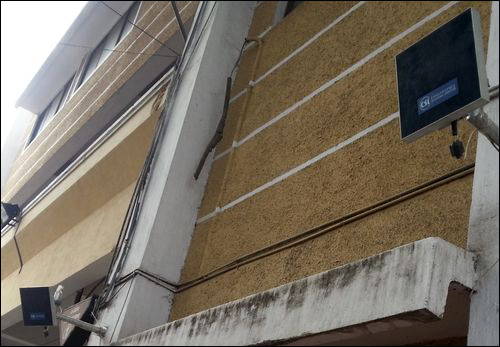Bangalore Metropolitan Transport Corp. (BMTC), which operates 6,597 buses and 50 stations throughout India’s third most populous city, is boosting its on-time bus schedule rate, by employing radio frequency identification technology to track the arrival of vehicles at its most active terminal. By mounting an RFID tag on each bus and two RFID readers at the terminal’s entrance, the company can identify when a particular bus may be running late, based on its arrival time, and can then address the problem as needed—for example, by assigning an additional bus to a late-running route, or by making changes to a specific route or schedule based on the RFID read times. The solution was provided by ABLogics, based in Bangalore.

During the two months since the technology’s installation, the Indian bus company’s adherence to appointed bus schedules has improved, says Amal Rani Meenakshi, ABLogics’ global solutions manager for RFID. BMTC’s dispatchers and managers, she explains, can now view when a bus is delayed and provide additional coverage as necessary, in order to ensure that passengers are picked up and delivered to their stops on time.
The BMTC transports 4.8 million passengers daily throughout the metropolitan area. It operates six terminals in the city of Bangalore, as well as 41 depots, and its vehicles operate according to 6,300 different schedules, for a combined average total of 83,618 trips daily. At the Shivajinagar bus terminal (BMTC’s largest) in central Bangalore, approximately 1,000 buses make eight to 10 trips each day, carrying a total of 100,000 passengers. Due to the large number of vehicles, drivers and routes involved, the transit company found it nearly impossible to identify which buses were delayed, and by how much time. The company conducts continual marketing efforts to encourage the use of public buses as an alternative to private motorized vehicles, such as cars or motorcycles; however, ensuring that bus schedules are reliable is critical to attracting passengers.
Prior to the installation of ABLogics’ TechBee rTrack solution—consisting of passive ultrahigh-frequency (UHF) EPC Gen 2 RFID tags, as well as readers and software to manage the collected data—the bus company had installed GPS vehicle-tracking units on its buses. But the GPS technology had limitations, Meenakshi reports, noting that the bus-mounted units tended to provide erratic and inaccurate location information. Therefore, the company turned to ABLogics to develop a better solution.
ABLogics’ TechBee tags consisted of Alien Technology ALN-9654 inlays encased in plastic material. A tag was affixed to the interior of each bus’ right (driver’s side) window via an adhesive. The company also installed two Convergence Systems Ltd. (CSL) CS203 readers, which were mounted on a wall near the entrance via metal brackets. Both interrogators, each of which has an integrated antenna, are located at a point at which drivers must slow down and negotiate a right-hand turn into the main terminal.
The unique ID encoded to each tag is linked to that bus’ number and route in the TechBee rTrack software, residing on BMTC’s server. Several times a day, a vehicle enters the terminal after completing its route, and as it approaches within 7 to 10 meters (23 to 33 feet) of a reader, the device captures the tag’s unique ID number. The interrogator forwards that ID via a cabled connection to the TechBee rTrack software, which compares the bus’ actual arrival time with the one listed on its schedule. If a significant discrepancy exists, indicating the bus is late, an alert can be issued to management. The company can then investigate the cause and take action to possibly prevent additional delays.
In addition, the firm can use the data to analyze the routes and determine when additional or fewer buses would be appropriate for specific routes and times.

Altogether, Meenakshi says, approximately 1,000 buses were tagged. This, he adds, resulted in about 8,000 tag reads daily.
According to Meenakshi, BMTC found that drivers were worried about the technology since it monitored their schedule compliance. However, she adds, this concern has largely dissipated over time, since the firm uses the data to address a variety of problems (traffic congestion and heavy passenger numbers at particular times, for instance) rather than to penalize the drivers.
“They are able to get information on why delays are happening,” Meenakshi states. “The analysis is leading to more improved performance.”
In the future, Meenakshi says, the bus company intends to install readers at the terminal’s exit, in order to determine how long each vehicle remains idle within the terminal, as well as at other key bus terminals and stations. This, she explains, will enable the company to obtain further information about its vehicles’ operation.


